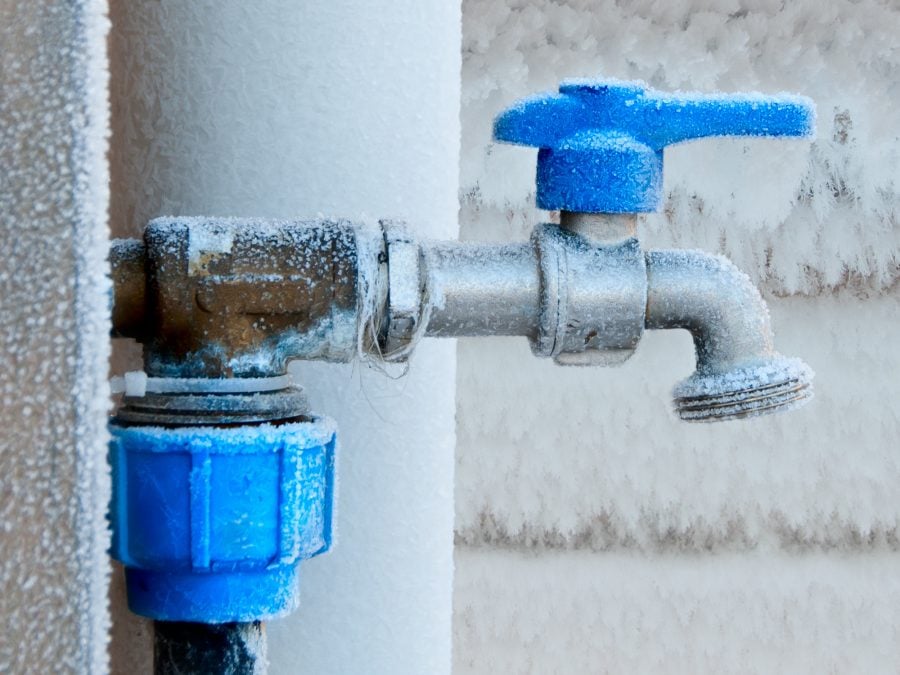Preventing Frozen Pipes: Best Strategies for Winter
Preventing Frozen Pipes: Best Strategies for Winter
Blog Article
This great article on the next paragraphs about How to Prevent Your Pipes From Freezing is totally enjoyable. Give it a go and draw your own personal conclusions.

Cold weather can damage your plumbing, specifically by freezing pipes. Here's how to avoid it from occurring and what to do if it does.
Intro
As temperature levels decline, the threat of icy pipelines boosts, possibly bring about expensive repairs and water damage. Recognizing exactly how to avoid icy pipes is crucial for home owners in cool climates.
Avoidance Tips
Insulating susceptible pipelines
Cover pipes in insulation sleeves or utilize warm tape to safeguard them from freezing temperatures. Concentrate on pipelines in unheated or external areas of the home.
Heating techniques
Maintain interior areas properly heated up, especially locations with pipes. Open closet doors to enable cozy air to distribute around pipes under sinks.
Just how to determine icy pipes
Look for decreased water circulation from taps, uncommon smells or sounds from pipes, and noticeable frost on subjected pipes.
Long-Term Solutions
Structural modifications
Think about rerouting pipelines away from exterior walls or unheated locations. Include extra insulation to attics, cellars, and crawl spaces.
Upgrading insulation
Invest in premium insulation for pipelines, attics, and walls. Proper insulation aids preserve consistent temperature levels and lowers the risk of icy pipes.
Protecting Outside Pipes
Garden hose pipes and outside faucets
Separate and drain pipes yard pipes before winter months. Set up frost-proof spigots or cover outdoor faucets with insulated caps.
Understanding Frozen Pipelines
What causes pipes to ice up?
Pipelines freeze when exposed to temperatures below 32 ° F (0 ° C) for expanded durations. As water inside the pipes freezes, it expands, taxing the pipe walls and possibly causing them to burst.
Risks and damages
Icy pipelines can cause water system disturbances, residential property damages, and expensive fixings. Ruptured pipes can flood homes and cause comprehensive structural damage.
Indications of Frozen Piping
Recognizing icy pipelines early can stop them from breaking.
What to Do If Your Pipelines Freeze
Immediate activities to take
If you think icy pipes, keep taps open up to alleviate stress as the ice thaws. Utilize a hairdryer or towels soaked in warm water to thaw pipelines slowly.
Verdict
Stopping icy pipes needs aggressive steps and fast reactions. By comprehending the reasons, indicators, and preventive measures, property owners can shield their pipes throughout winter.
5 Ways to Prevent Frozen Pipes
Drain Outdoor Faucets and Disconnect Hoses
First, close the shut-off valve that controls the flow of water in the pipe to your outdoor faucet. Then, head outside to disconnect and drain your hose and open the outdoor faucet to allow the water to completely drain out of the line. Turn off the faucet when done. Finally, head back to the shut-off valve and drain the remaining water inside the pipe into a bucket or container. Additionally, if you have a home irrigation system, you should consider hiring an expert to clear the system of water each year.
Insulate Pipes
One of the best and most cost-effective methods for preventing frozen water pipes is to wrap your pipes with insulation. This is especially important for areas in your home that aren’t exposed to heat, such as an attic. We suggest using foam sleeves, which can typically be found at your local hardware store.
Keep Heat Running at 65
Your pipes are located inside your walls, and the temperature there is much colder than the rest of the house. To prevent your pipes from freezing, The Insurance Information Institute suggests that you keep your home heated to at least 65 degrees, even when traveling. You may want to invest in smart devices that can keep an eye on the temperature in your home while you’re away.
Leave Water Dripping
Moving water — even a small trickle — can prevent ice from forming inside your pipes. When freezing temps are imminent, start a drip of water from all faucets that serve exposed pipes. Leaving a few faucets running will also help relieve pressure inside the pipes and help prevent a rupture if the water inside freezes.
Open Cupboard Doors
Warm your kitchen and bathroom pipes by opening cupboards and vanities. You should also leave your interior doors ajar to help warm air circulate evenly throughout your home.

I stumbled upon that blog posting on How To Avoid Freezing Pipes while scouting around the web. Those who enjoyed reading our page plz consider to pass it around. Kudos for being here. Come back soon.
Get Started Report this page